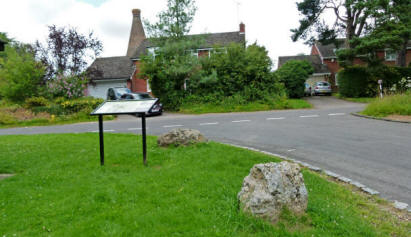Nettlebed Common around 1900 from Windmill Hill. The large pond is the Sea Pond which still exists.
Nettlebed was the major centre for brick, tile and pottery manufacture in Oxfordshire from medieval times, and possibly even earlier, up until the 20th century. As the same materials are required for both brick and pottery manufacture, namely clay, sand, water and firewood, the history of these products is inevitably closely linked. There is evidence that bricks were used in the region during Roman times although no manufacturing sites have been found. After the Romans left England around 300A.D. the use of bricks declined until the 12th century although there is evidence that medieval potteries operated in Oxfordshire in the 9th century. Nettlebed and nearby Crocker End, situated on the top of the Chilterns escarpment on a rich bed of Reading Clay and with a plentiful supply of firewood and pond water, was a natural site for brick and pottery making.
700 feet above the...

